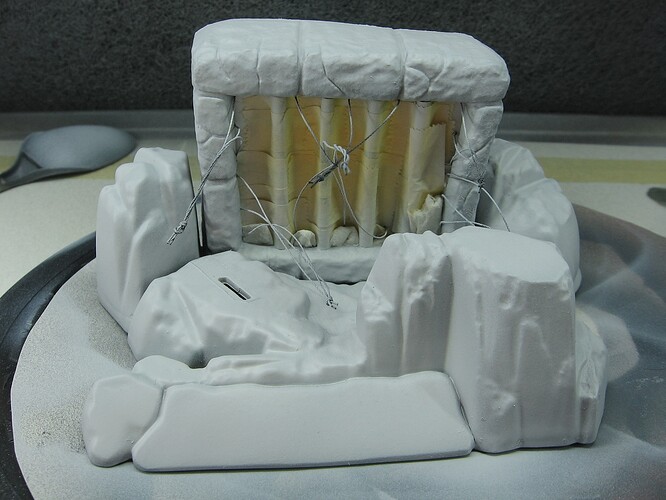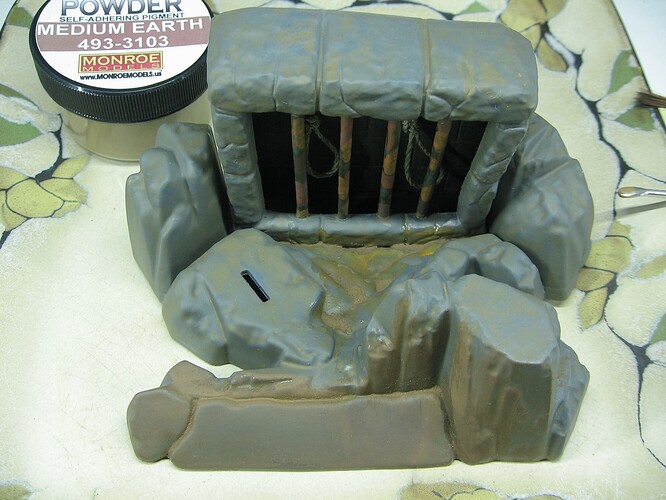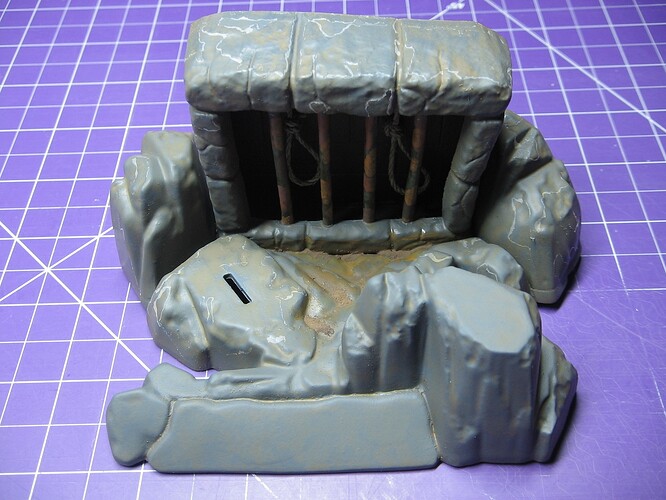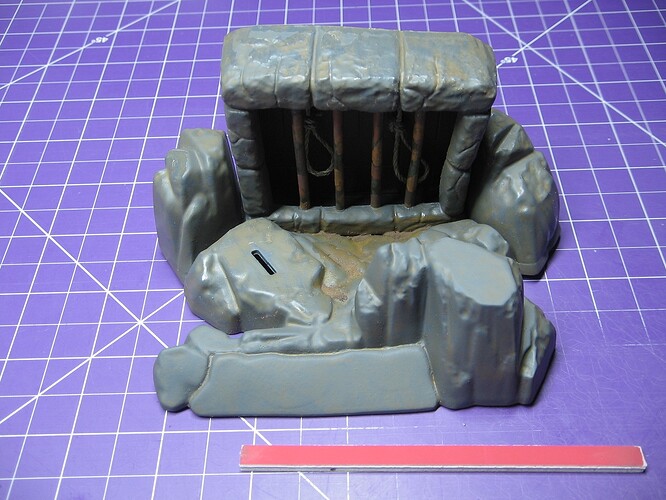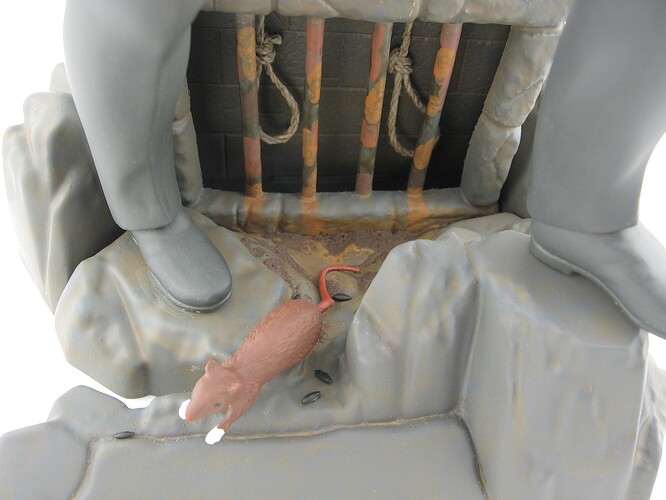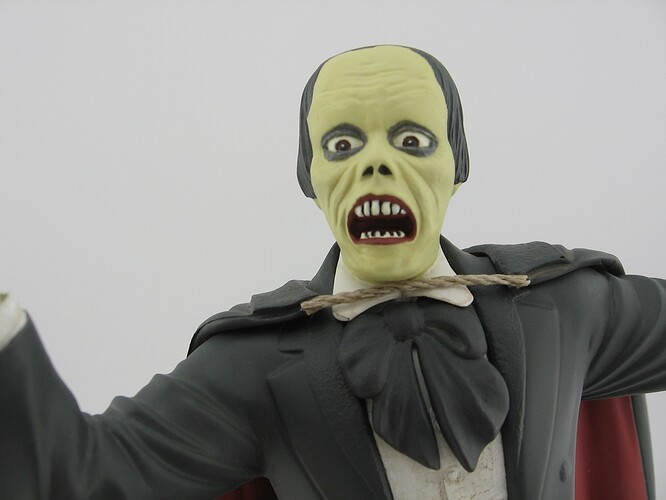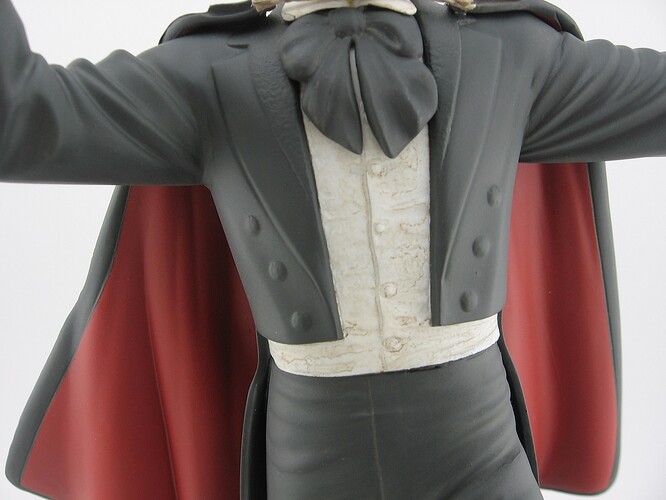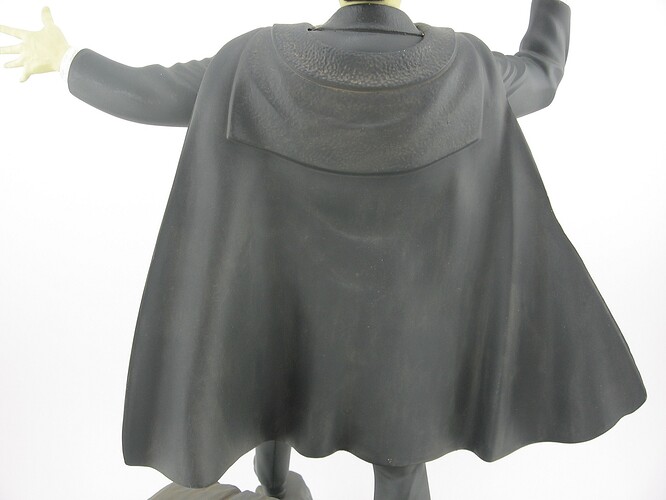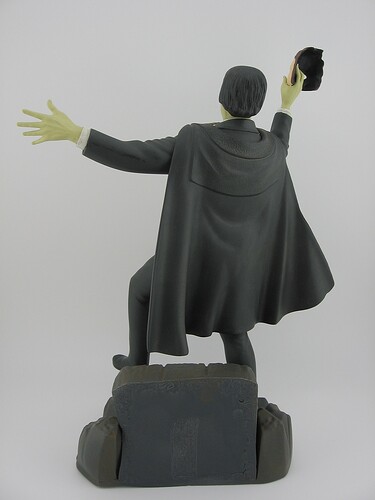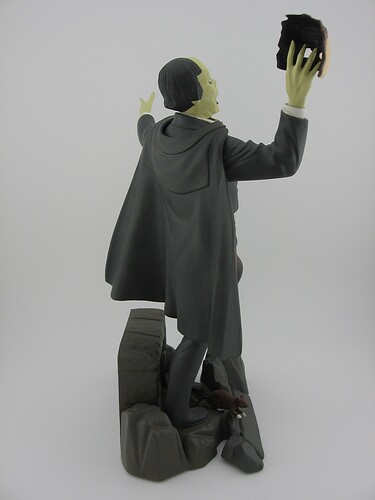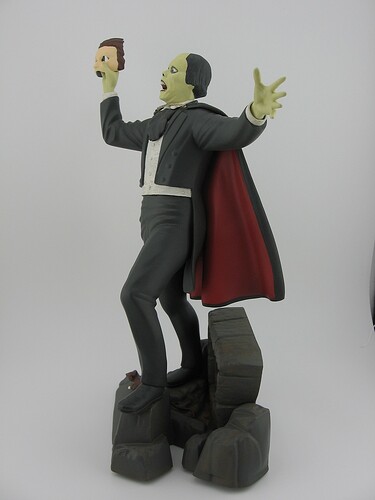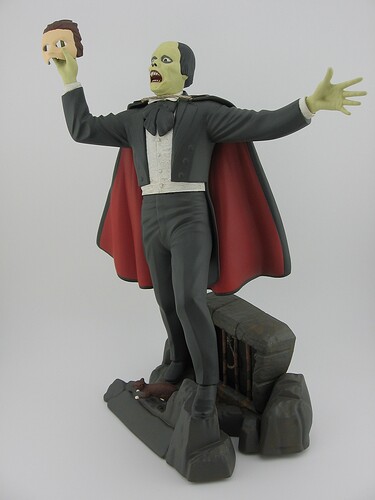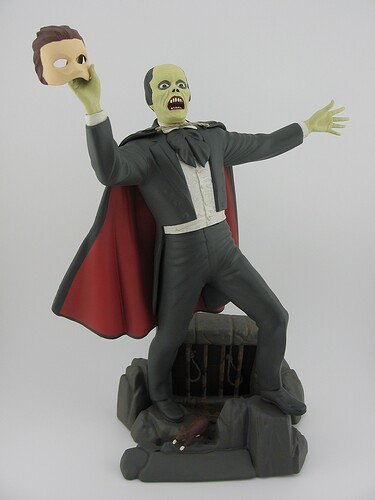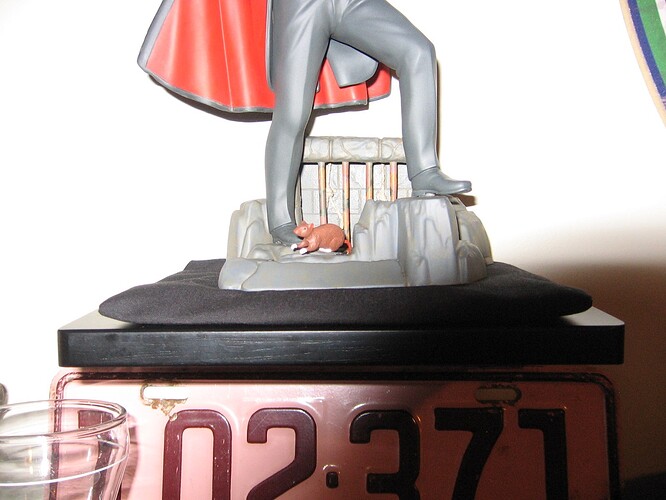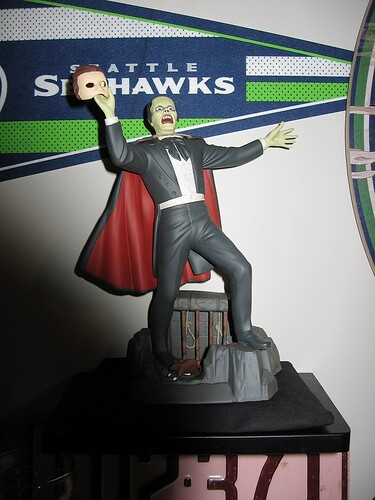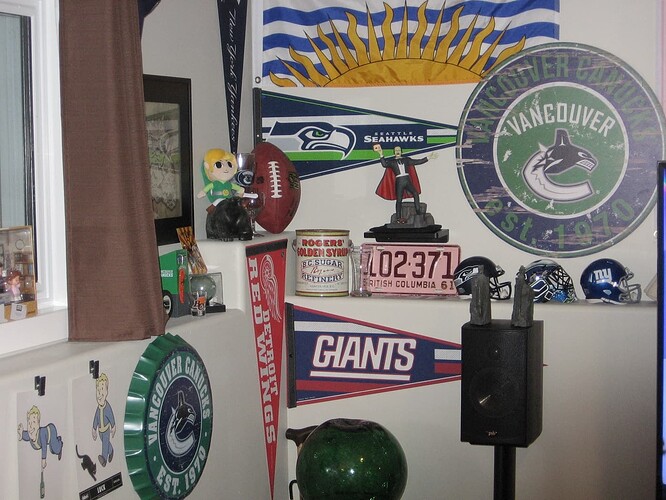Main parts attached over the last week and a half. Final touch ups applied two nights ago. Pictures taken yesterday. I’m very excited to announce that this project is complete.
Before I forget, I want to thank everyone (including lurkers, if any) who followed this build log. Many thanks to all comments, advice, ideas, encouragement and support. Without you guys, I’m not sure how this model would have turned out. I learned so much during this build, but still have lots to learn. Such as dry brushing. Never did get that right for this project.
I totally own that it’s not award winning work and I’m okay with that. For my second completed model in approximately 52 years, I’m very happy with it.
Here’s the run down of the final stretch and finish line…
I applied Monroe Models Medium Earth Weathering Powder into the depression of the base to simulate accumulated dirt. It resulted in two colors. Brown (expected) and orange (unexpected). Fortunately, this orange is remarkably similar to the orange I applied to the torture chamber bars. So, to explain, rhetorically, where the orange in the depression came from, I decided to add orange “rust” bleeding down from three of the four torture chamber bars, using Vallejo Model Color 70.981 Orange Brown.
Of course the close up shot shows every imperfection and dust speck, but I digress.
Also in this shot, obviously, is the rat, and, surprise(!), rat poop! Where there’s a rat, there’s rat poop, no? Research on rat poop taught me that it is ~12-18mm in size. I went with the 15mm median and worked out 1/8 scale of that is 1.9mm. If memory serves me correctly (I made them months ago) these turds are slightly bigger than that, but hey… if Erik’s best friend was a rat then it was probably well fed. Haha!
Next slide please…
Slightly out of focus, but not bad. I didn’t like how the kit provided cape tie was positioning, so I decided to use a piece of the same rigging thread (Corel Modellismo 1.2mm) I used for the nooses. Hand brushed with Vallejo Ultra Matt Polyurethane Varnish. I’m glad I did this as I really like it and like the resulting juxtaposition (is that the right word?) with the nooses.
This picture shows how the weathering of the shirt turned out (cuffs and collar were done too). I used AK 078 Damp Earth enamel wash.
And the weathering of the cape. AK 078 Damp Earth wash used here too. I was pleasantly surprised how this turned out.
Full rear view.
Full side view, right.
Full side view, left.
Full front view, angled.
Full front view, straight on.
This shot shows the little pillow my wife sewed up for me, for the model to sit on and help disguise the distortions created from my hair dryer faux pas. It just sits better on this too. Not wobbly.
On the floating shelf.
Erik right at home in the Man Cave.
Colors used:
Everything, except the cape tie and nooses, was primed with Vallejo Surface Primer Grey.
Base and Torture Chamber Back Wall:
- Vallejo Model Air (VMA) 71.047 Grey
- AK Interactive 078 Damp Earth Enamel Wash (thinned)
Torture Chamber Bars:
- VMA 71.047 Grey
- Vallejo Game Color 73.200 Sepia Wash
- Vallejo Model Color (VMC) 70.940 Saddle Brown
- VMC 70.818 Red Leather
- VMC 70.941 Burnt Umber
- VMC 70.981 Orange Brown
Face and Hands, (Jaundice effect):
- VMA 71.106 Ivory (75%)
- VMC 70.951 White (25%)
Hair:
Eye Whites:
- VMA 71.106 Ivory (25%)
- VMC 70.951 White (75%)
Irises:
Pupils:
Eye Catch Lights:
Raccoon Eyes:
Teeth:
- VMA 71.106 Ivory (12.5%)
- VMC 70.951 White (87.5%)
Teeth Gaps:
Nostrils:
Mouth and Lips:
Shirt (including lapel and cuffs):
- VMC 70.951 White (75%)
- VMA 71.119 White Grey (25%)
- AK 078 Damp Earth Enamel Wash
Suit, Cape (back), Shoes, Cravat:
- VMA 71.056 Panzer Grey
- AK 078 Damp Earth Enamel Wash
Cape (inside):
- VMA 71.003 Red
- AK 078 Damp Earth Enamel Wash
Mask:
- VMA 71.076 Skin Tone
- VMC 70.984 Flat Brown
Rat Fur: VMC 70.984 Flat Brown
Rat Paws: VMC 70.928 Light Flesh
Rat Ears, Tail, Nose: VMC 70.982 Cavalry Brown
Rat Eyes: VMC 70.950 Flat Black
Rat Poop: VMC 70.950 Flat Black
Some final thoughts:
- If there is anything that I would do differently, that hasn’t already been mentioned, is perhaps the torture chamber bars are a little too busy, with too many colors. I think moving forward with other models, I will tone rust weathering down a bit. Learn to do more with less.
- I was hoping for the weathering of the suit and inside of the cape to turn out more like how the back of the cape turned out, but I didn’t want to push it. I fully intend to learn dry brushing (I have a plan) and my next monster model (Wolfman) will (hopefully) be dry brushed, not washed.
Thanks, once again, so much. Off to continue my 1/200 Trumpeter Titanic now.
Cheers,
Mark


